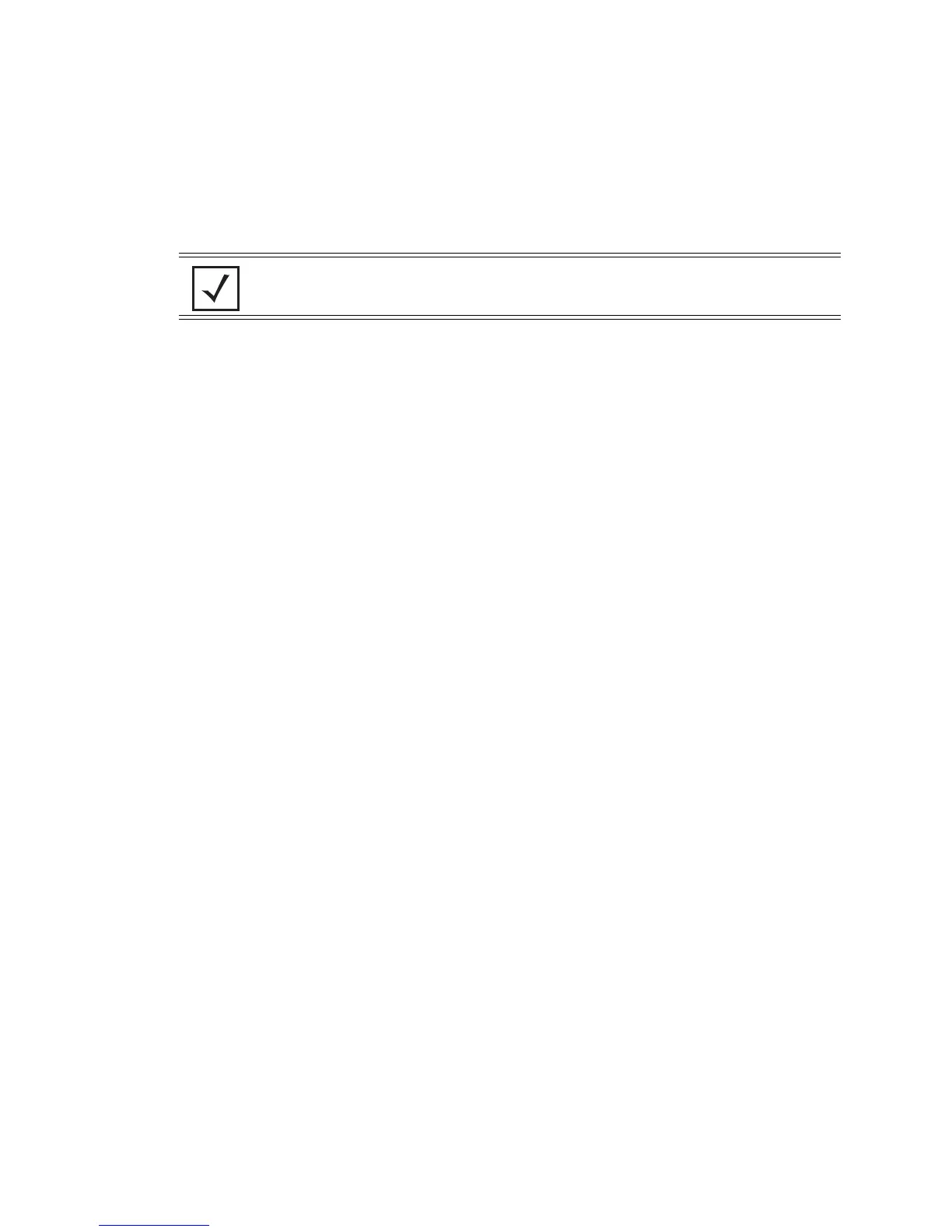4-180 Motorola RF Switch System Reference Guide
3. Refer to the Accounting field and define the following credentials for a primary and secondary Radius
servers.
4. Refer to the Advanced field to define the authentication protocol used with the Radius Server.
5. Click OK to save the changes made to this screen.
6. Click Cancel to revert back to the last saved configuration and move back to the
Network > Wired Hotspot > Edit screen.
Server Retries Enter a value between 1 and 100 seconds to indicate the number of times the
switch attempts to reach the primary or secondary Radius server before giving up.
Dynamic
Authorization
Check this option to enable RADIUS Dynamic Authorization. RADIUS Dynamic
Authorization enables the RADIUS administrator to send the disconnect and
change of authorization packets to the switch (NAS) for wired hosts.
NOTE: The Radius server’s Timeout and Retries should be less than what is defined for
an MU’s timeout and retries. If the MU’s time is less than the server’s, a fall back to the
secondary server will not work.
Accounting Server
Address
Enter the IP address of the primary and secondary server acting as the Radius
accounting server.
Accounting Port Enter the TCP/IP port number for the primary and secondary server acting as the
Radius accounting data source. The default port is 1813.
Accounting Shared
Secret
Provide a shared secret (password) for user credential authentication with the
primary or secondary Radius accounting server.
Accounting Timeout Enter a value (between 1 and 300 seconds) to indicate the number of elapsed
seconds causing the switch to time out a request to the primary or secondary
accounting server.
Accounting Retries Enter a value between 1 and 100 to indicate the number of times the switch
attempts to reach the primary or secondary Radius accounting server before giving
up.
Accounting Mode Use the Accounting Mode drop-down menu to define the accounting mode as
either
Start-Stop, Stop Only, or Start-Interim-Stop. Define the interval (in
seconds) used with the selected accounting mode.
PAP PAP - Password Authentication Protocol sends a username and password over a
network to a server that compares the username and password to a table of
authorized users. If the username and password are matched in the table, server
access is authorized.
CHAP CHAP is an encrypted authentication method based on Microsoft's challenge/
response authentication protocol.
DSCP/TOS Optionally mark packets with a DiffServ CodePoint (DSCP) in its header. The DSCP
value is stored in the first 6 bits of the Type of Service (ToS) field that is part of the
standard IP header. The DCSP values are associated with a forwarding treatment
called Per Hop Behaviors (PHB). Service can be provisioned (if necessary) by
assigning a DCSP point code from 1 - 6.

